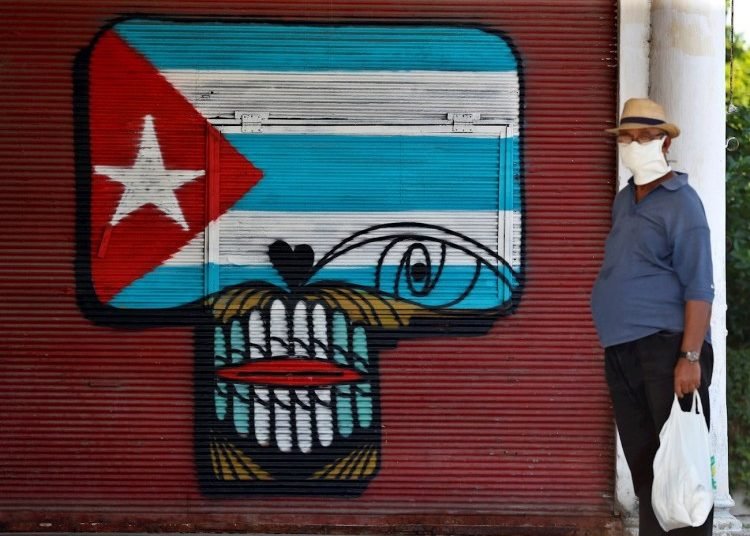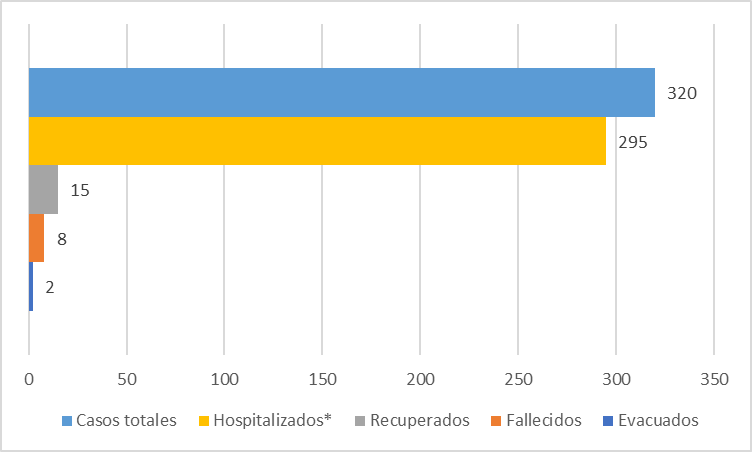Solidarity between nations, solidarity between health workers, solidarity among all of us, it is the only way to stop this #COVID-19 pandemic.
Twitter message from the Director General of the World Health Organization (WHO),
The crisis presents dilemmas
At this time of crisis, we are facing at least two important options. The first is between the privatized, commercialized and unequal health systems, vs universal and accessible public health. The second is between nationalist isolation and global solidarity.
The neoliberal argument that the privatization of health represents greater efficiency, lower public cost and more freedom of choice to consumers has collapsed in the face of hospitals that have crashed, excessive competition for scarce resources and equipment, entire unprotected vulnerable groups, and late response to the crisis.
On the other hand, the epidemic itself and the resulting economic crisis are global problems, which can only be solved through global cooperation: countries willing to openly share information, produce and distribute medical equipment, and cooperate with health personnel by helping countries and regions more affected and with fewer resources to face them.
In both cases, Cuba is an example, practically silenced in the media.

Before the first positive case
They saw it coming. As soon as the global epidemic broke out and before it was felt in Cuba, the Cuban government developed the National Plan for Prevention and Control of COVID-19 and established intensive surveillance of respiratory syndromes.
In February 2020, a team of virologists from the National Reference Laboratory of the Pedro Kourí Institute of Tropical Medicine (IPK) in Havana received training from the Pan American Health Organization (PAHO) in the diagnosis and treatment of COVID-19, a disease caused by the new SARS CoV-2 coronavirus.
And they were ready when it arrived. On March 10, the first suspicious cases in the country were identified: four Italian tourists with respiratory symptoms in a hostel in Trinidad who had arrived by plane to Havana the day before. They were immediately transferred to the IPK where three of the four were positive. Jointly, epidemiological surveillance measures were applied to all Cubans with whom they had come into contact.
From then on, new infections were detected among foreigners or Cubans arriving in the country from Europe, Canada, the United States, China and Latin America, and from Cubans who became infected in the national territory, on being in contact with foreigners, of Cubans coming from abroad. or secondary cases related to foreigners.

*Caption
Cuba: Evolution of COVID-19 positive cases, total and by day
Mie – Wed
Jue – Thurs
Vie – Fri
Sab – Sat
Dom – Sun
Lun – Mon
Mar – Tues
Acumulado – Total/Por día – By day
Contagions have been detected in almost all the provinces of the country, with a greater presence in the municipalities with the most international travelers.
The national situation at the time of writing this article was the following:
*Caption:
Total cases
Hospitalized
Recovered
Deceased
Evacuated
Up to April 4, of the 320 positive cases diagnosed, 295 remained hospitalized, 15 had recovered (4.7%), 8 had died (2.5%), and two patients were evacuated, to the United States and Canada, respectively.
Cuba is in what the WHO calls Phase 1 “Pre-epidemic” of the pandemic, one in which the country remains without transmission. Phase 2 is “Limited local transmission.” In Cuba there have only been three cases of local transmission: in Matanzas, Consolación del Sur, Pinar del Río, and in El Vedado, Havana. In all, the isolation of the community was decreed and controlled. This has thus far prevented the spread of the epidemic in Cuba.
China and South Korea are the only two countries that have flattened the curve for new coronavirus infections. Cuba has not reached the peak, but has used international experience and its diagnosis and treatment strategy promises that in a few weeks it will be able to control the epidemic. What are some of the lessons learned?
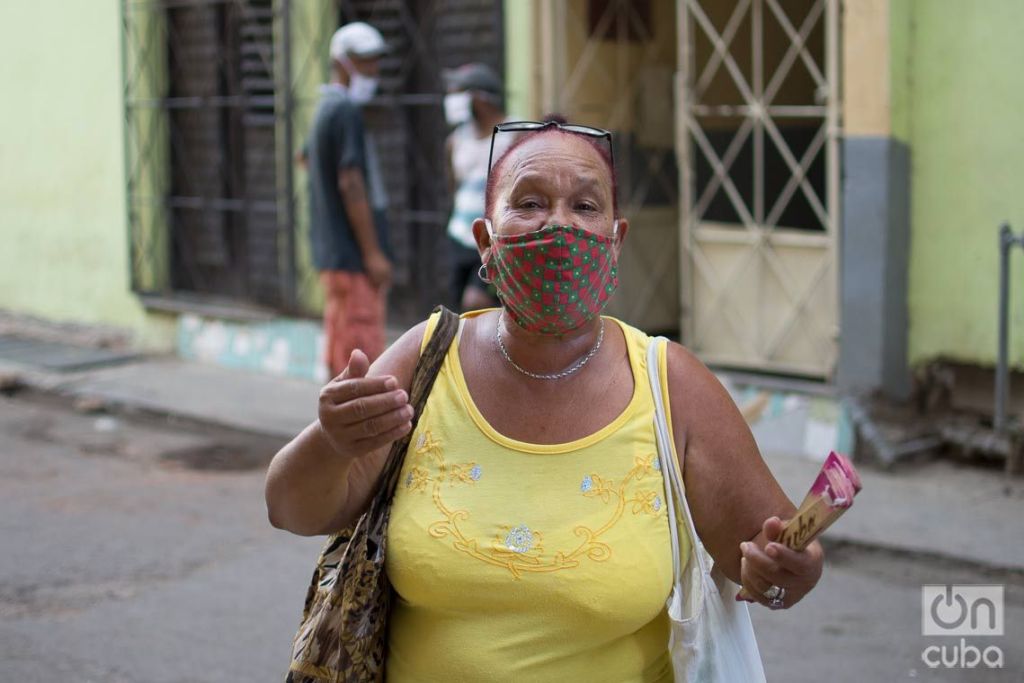
Lesson 1: To intervene quickly, before it becomes a crisis
In South Korea, after identifying the source of the infection, authorities quickly acted to contain it. They imposed emergency measures in Daegu, a city of 2.5 million inhabitants, with a Pentecostal church from where the epidemic spread. A week after detecting the first case, they met with representatives of various medical companies, urging them to massively develop the rapid test used to diagnose the coronavirus. In two weeks’ time, thousands of test kits were already being distributed. Currently the country manufactures 100,000 tests a day and exports them to several countries.
In Cuba, measures were adopted since the first suspect was detected, isolation of the infected cases and epidemiological control of their contacts, as well as border surveillance and investigations to detect symptomatic people among the population.
On March 24, the entry of foreigners and Cuban emigrants was limited. Until that moment, at the points of entry―airports and ports―epidemiological control was exercised by health professionals and the temperature of passengers and crew was controlled. But it became evident that all the positive cases were foreigners or Cubans recently arrived from any country with the presence of this pandemic, or people in direct contact with them or their relatives.
From that date, stricter measures were taken, anticipating Phase 2. Among them, the return to their countries of residence of all foreign visitors and Cuban emigrants was determined. As of March 25, arrivals were limited to residents returning to the country. A week later ships, flights and passengers were banned from entering the country, except for humanitarian and commercial reasons. Travel abroad by Cuban residents was also prohibited, with exceptions, for a period of 30 days.
All arrivals are sent to one of the 67 isolation centers, with a total capacity of almost 10,000 beds, which have started being prepared throughout the country, to comply with the established 14 days of quarantine.
As of March 24, other measures were announced: interprovincial public transportation was suspended; discos, swimming pools, gyms were closed and other recreational, sports and political activities were suspended, including the famous May Day parade in the Plaza de la Revolución. “We will sing ‘The International’ from our homes,” the announcer proposed. The school year was interrupted until April 20, but not the daycare centers; teaching activities in university classrooms were suspended applying the non-contact modality; it was decided to defer all tax obligations and quota reductions were applied to self-employed workers.
Labor reorganization was adopted, closing all non-essential services, commerce and office activities, both state and private, and a package of economic measures for wages, taxes, and credits was applied to all affected persons and entities.
Most of the restaurants that are still open only provide pick-up or home delivery service, shops are not serve adults accompanied by children and require that buyers wear facemasks, while salesclerks wear gloves and disinfect with hypochlorite. The Cuban “carefree attitude” seems to have been significantly attenuated, but the “joking is alive and well” with new jokes and cartoons so as not to lose the characteristic Cuban humor.
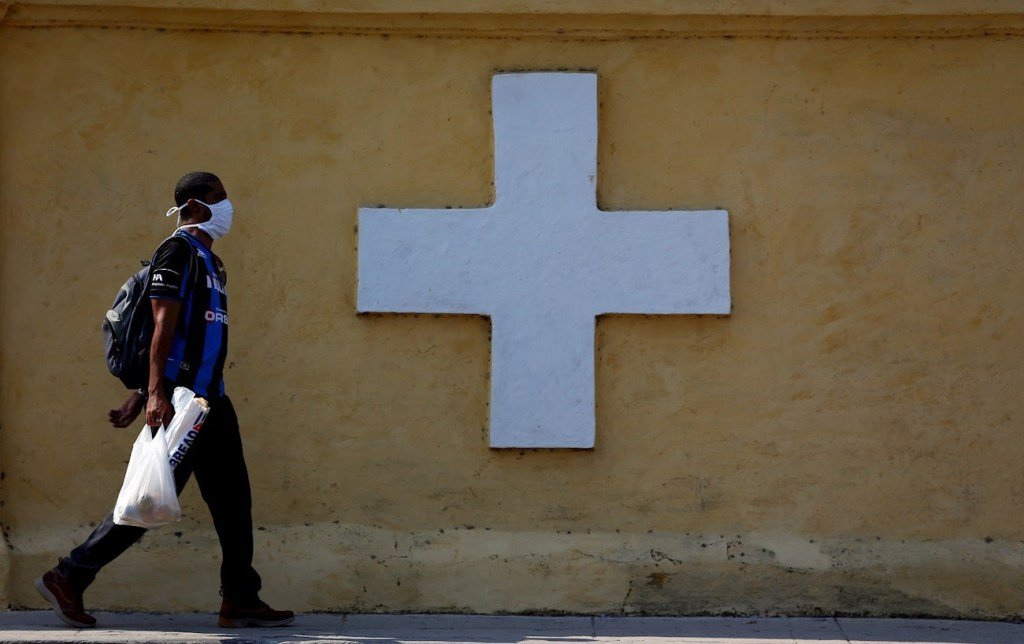
Lesson 2: Early, frequent, and safe testing
South Korea has carried out 300,000 tests, more than any other country, which has made it possible to isolate and treat many more infected persons. Tests enable early detection, reduce spread, and allow rapid treatment of patients. It is also the key behind its low death rate.
Intense public communication campaigns urge South Koreans to be tested for symptoms. Foreign visitors are required to download an application that guides them to self-check for symptoms. Thermal cameras have been set up in offices, hotels and large buildings to identify people with fever.
Cuba started by applying just over a hundred daily real-time PCR tests to suspects and symptomatic persons, a number that has grown exponentially. Minister of Public Health Portal Miranda affirmed that the country has laboratory backing for the diagnosis of COVID-19 and there are no difficulties in this regard.
“The increase in the number of cases,” said Portal Miranda, “does not have to do with a greater availability of diagnostic tests but with an evaluation of each of the cases that have been followed. Each of the people who have required the study has had it done.
“We have been importing the resources for the diagnosis, which is carried out today in three reference laboratories in the country: at the Pedro Kourí Institute of Tropical Medicine (IPK) and at the provincial centers of hygiene and epidemiology in Villa Clara and Santiago de Cuba, whose capacities respond to the demand of the studies for the confirmation of the cases.”
As of March 30, Cuba has 100,000 rapid tests from China that in just 30 minutes allow the presence of the virus to be known. These tests are being applied to people who are isolated in authorized centers throughout the country, for presenting an epidemiological risk or for having arrived in the country from abroad, so that it can be immediately known if they carry the virus. Positive cases are confirmed with the real-time PCR test.
When there exists a baseline of daily tests in the country, the drop in the percent of positive tests will be the sign that the virus has so far found the maximum number of hosts, and is beginning to recede.
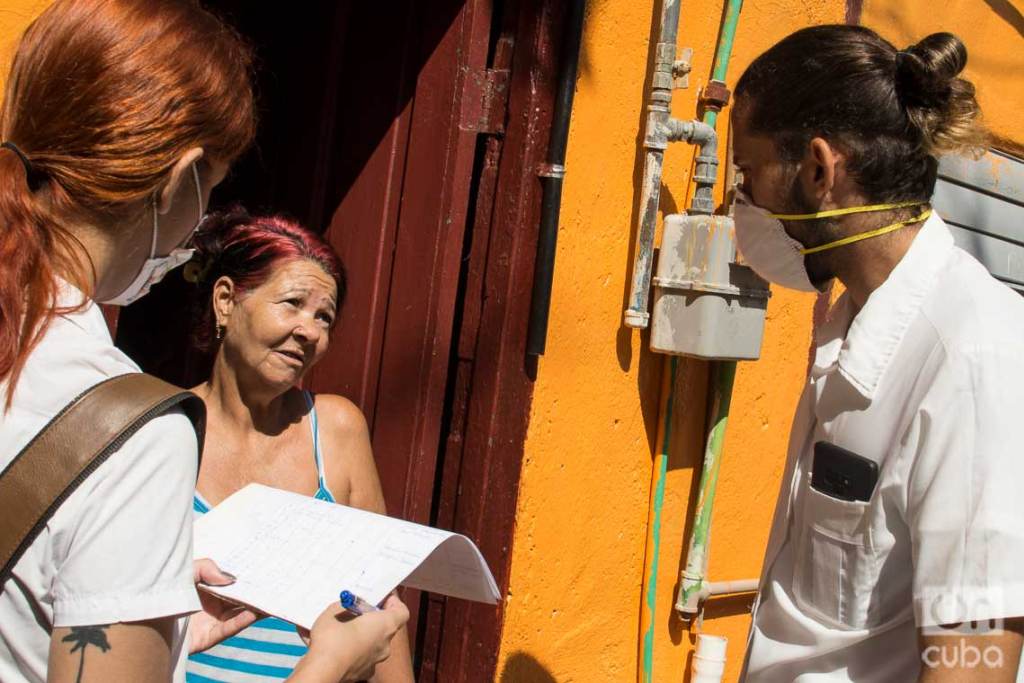
The idea is not to wait for the cases to appear, but to look for the infected
A recent study in the journal Science found that for every confirmed case of COVID-19 there are probably five to ten people in the community with undetected infection. This is why, to control the epidemic, said Dr. Francisco Durán, national director of epidemiology, a fundamental element is to investigate the largest number of people, in order to detect symptoms, isolate them, do focus checks and identify viruses that are circulating.
In Cuba, screenings are carried out house by house in the communities by family doctors, medical students, health personnel and members of women’s and neighborhood organizations. On March 31, for example, 8,668,063 persons (out of a population of 11.2 million) were screened, of whom 31,361 people with symptoms were identified and, of these, 221 were suspects.
In addition, the 47,000 travelers who arrived in the country in the last 15 days, and especially the 2,182 who arrived in the last week from countries at risk, receive differentiated surveillance: 54 were suspects and another 57 had respiratory symptoms.

Lesson 3: Outline the contact chains, isolate and monitor
When a positive case is detected, health workers and other collaborators immediately identify possible transmission networks.
In South Korea, security camera recordings, bank card records, and GPS data from cars and cell phones of infected cases are used to identify their previous contacts. Persons subject to mandatory quarantine must download an app that alerts authorities when they violate isolation. Early identification and segregation of milder cases have allowed hospitals to be reserved for the most severe patients. Its death rate is one percent, one of the lowest in the world.
In Cuba, with more primary and less expensive mechanisms, but with equal effectiveness, the authorities have identified the contact chains of each of the infected, locating relatives, airport and tourist workers, private landlords and their families, travel agents, carriers and others who have had contact with the suspects, to later monitor them if they are asymptomatic or attend to them if they show signs.

Lesson 4: Request help from the population
The South Korean leadership determined that to placate the epidemic it was necessary to keep the population informed and request their cooperation. Television broadcasts, subway station announcements and cell phone alerts continually insist on the need to use facemasks and maintain social distancing and report daily data on the epidemic.
Right from that star, in Cuba all the media insisted on preventative measures. A call has been made to maintain social distancing, to make industrial and artisan facemasks and their generalized use, washing and disinfecting hands and clothes and, above all, to stay at home as much as possible. Countless television commercials have been broadcast and the slogan is: #StayAtHome. Musicians and artists give concerts on television and social networks, athletes, actors and other “influencers” repeat the slogans from their homes, patrol cars with loudspeakers stroll the streets calling for young people to return home and police officers control the “lines” to ensure everyone wears facemasks and maintains social distancing.
Work at home is encouraged as much as possible and some Internet access fees have been reduced. From Monday to Friday television broadcasts teleclasses for all grade levels, calling on parents to maintain the study routine, while universities carry out distance education. Trust in the government has generated a high degree of citizen awareness and voluntary cooperation.
Many of these actions began spontaneously by the population, which develops different forms of volunteering, such as making and giving facemasks to neighbors, supporting the elderly so that they don’t leave home, or reducing visits to family members, replacing them with telephone communication, to maintain physical distance and emotional closeness. Also, support is offered to Cubans living in and outside the country, through PSICO GRUPOS on WhatsApp, an initiative of a group of professionals from different institutions who, from various sections of the Cuban Society of Psychology, joined forces and created this psychological counseling service to deal with the emotional consequences of the sanitary distancing that the pandemic requires and to enhance personal and social well-being.
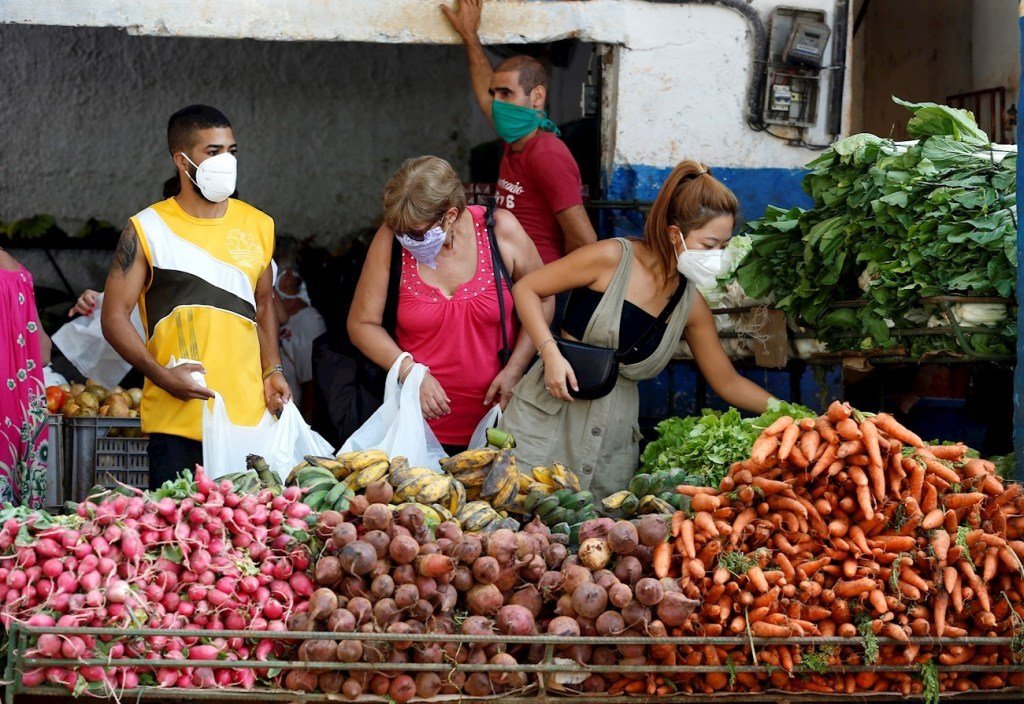
Between U.S. sanctions…
Unlike most nations, Cuba’s ability to confront the pandemic is curtailed by severe U.S. sanctions, which have escalated during the Trump administration. Since the middle of last year, Washington has increased sanctions against Cuba, which include financial persecution and efforts to prevent fuel shipments, bans on the entry of American tourists and cruise ships, and a worsening of the over 60-year-old blockade. The Trump administration penalizes foreign shipping companies for transporting cargo to Cuba, restricting the flow of fuel, food and other key imports to meet the needs of the population. Chronic shortages began months before the coronavirus appeared.
The siege continues even with the pandemic. Cuba denounced that one of the shipments from the Jack Ma Foundation with medical supplies and equipment for the diagnosis of COVID-19 could not reach the island as a result of the Helms-Burton Act. Jack Ma, founder of the Chinese company Alibaba, announced on March 22 that he would send a shipment of facemasks, rapid diagnostic kits and ventilators to Cuba to help combat the pandemic, but at the last minute the contracted U.S. carrier declined due for the effects of said extraterritorial law.
In this context, many countries, international and solidarity organizations, personalities and friends from around the world have called for the lifting of sanctions against Cuba, Venezuela, and other countries suffering from the pandemic.
UN Secretary General Antonio Guterres called for the lifting of the sanctions imposed on different countries to guarantee access to food, health supplies and assistance. UN High Commissioner for Human Rights Michelle Bachelet also called for the suspension of economic sanctions imposed in this crucial period of pandemic due to the coronavirus.
Argentine President Alberto Fernández advocated in the G20 to lift the blockade imposed by the United States on Cuba and Venezuela, after noting that it is not a political but a humanitarian issue. Likewise, the Church World Service joined the demand of numerous religious and humanitarian organizations that demand the immediate lifting of U.S. sanctions.
In Great Britain, the Cuba Solidarity Campaign issued an “open letter” demanding the suspension of the blockade, which collected more than 6,000 signatures in the first three days.
And a group of Cuban immigrants has asked U.S. President Donald Trump to revoke the blockade imposed on the island due to the advance of the new coronavirus.

…and Cuba’s solidarity
Only three countries―China, Russia and Cuba―have so far heeded the WHO Director-General’s call for solidarity between nations.
For Cuba, medical collaboration is a practice that began in 1963 with the earthquake in Chile and continued in liberated Algeria. Currently, some 28,760 Cuban health professionals provide services. They have all received distance training on how to fight the virus.
From the beginning of the epidemic, the Ministry of Public Health activated the members of the Henry Reeve Internationalist Contingent―named in honor of the Liberation Army officer, born in New York 170 years ago, who gave his life for Cuba’s independence―that specializes in situations of disasters and serious epidemics, and gave them specific preparation for this disease.
“Today we have 14 Henry Reeve brigades that have left to combat this pandemic, with 593 professionals (179 doctors and 399 nurses, 15 technologists) and it is striking that 388 women are part of these brigades,” said Dr. Durán, national director of epidemiology. They are serving in two European countries, Italy and Andorra, and 12 countries in Latin America and the Caribbean, supporting the fight against COVID-19. On April 4, Barbados became country 15, receiving 101 Cuban nurses and doctors. The French government also asked Cuba for specialized health personnel to support its overseas territories in the Caribbean.
Received with applause at the airport and billboards of gratitude in the city, a brigade of Cuban doctors and nurses arrived at the Crema Hospital Mayor, in Lombardy, Italy, severely affected by the COVID-19 pandemic. They established a field hospital area where they are strengthening health care capacity and intensive care services.
It is regrettable that the three countries on the continent that succumbed to pressure from the U.S. government and expelled Cuban health collaborators, Ecuador, Brazil and Bolivia, are the ones suffering the most from the pandemic and the shortage of qualified personnel to face it, particularly in their most underprivileged populations.
Another example of that solidarity was the rescue of the MS Breamer cruise ship from the British Fred Olsen Line, which had spent several days in Caribbean waters with 682 passengers and 381 crew members, at least five people confirmed with COVID-19 and 43 with flu symptoms. After being denied entry to multiple ports in the region, Cuba provided it with safe harbor.
The ship docked on Tuesday, March 17 at the port of Mariel and all the passengers plus part of the crew were transferred by bus to José Martí International Airport in Havana where they boarded British planes that took them to London, an operation that culminated on March 18. The appreciation of passengers, crew members, companies and the British government poured. Fortunately, the 43 Cubans who participated in the operation, in direct contact with the travelers, were tested negative for the virus.
On the other hand, the Cuban pharmaceutical industry guarantees the production of drugs for the treatment of COVID-19, such as Recombinant Human Interferon Alpha 2-B, which was successfully used in China together with other drugs to treat the effects of viral infection. In addition to its production in Cuba, the Cuban interferon, Heberon Alfa R brand, is made with Cuban technology at the Changchun Heber Biological Technology joint venture, located in Jilin, China. As of March 27, more than 45 countries had requested this product for therapy against COVID-19, given the favorable results in China, Cuba and other countries.
There are 21 other products that are part of the health protocol in Cuba for the treatment of complications developed by patients who become infected with COVID-19.
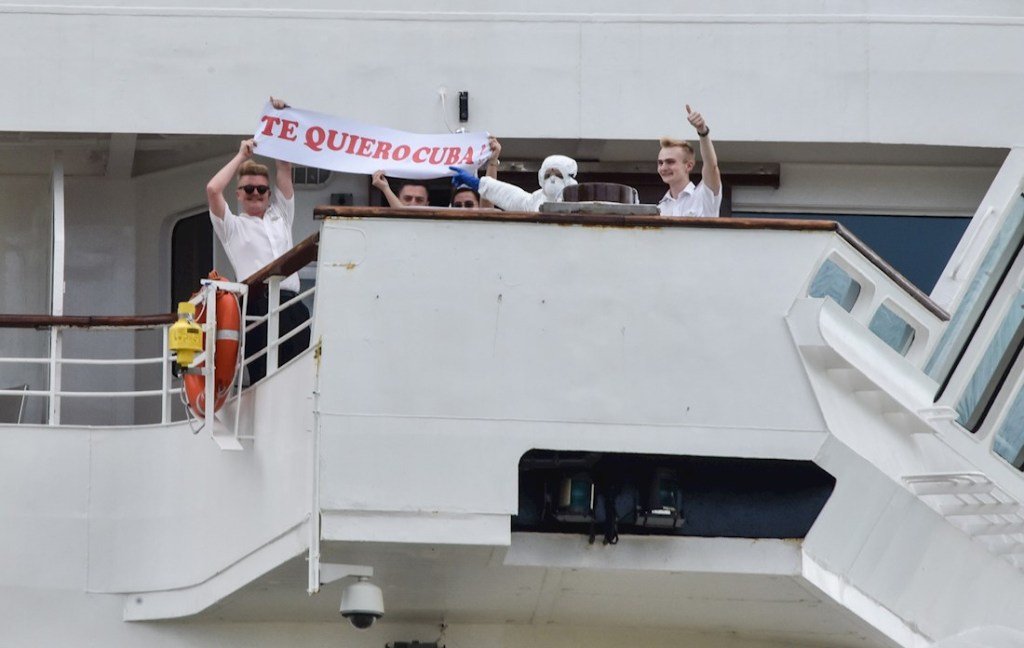
Overcoming vulnerability
As the pandemic progresses and the global economy stops, the world’s most vulnerable countries suffer its effects with greater intensity. From Asia, Africa and Latin America, developing countries are facing the pandemic with a public health emergency combined with an economic crisis, one aggravating the other. Inequality between and within countries is highlighted as never before, starting with their health systems.
Those who fell into the neoliberal trap of privatizing or reducing investment in health, education and other public services, of sacrificing food security for imported consumerism, of seeing a strong state as the problem and not as the solution, face the double pandemic without public policy tools, popular support or consensus.
The crisis is uncovering the brutality of an economy organized around production for profit and not to satisfy human needs. The reasoning in favor of a viable socialist State, or at least of social welfare, is based not only on meeting the immediate needs of millions of people but also on reestablishing social connectivity, collective responsibility, human solidarity and a sense of common purpose, even of collective wealth.
Compared to other countries, Cuba is better prepared to face both pandemics, and a third: the strengthened sanctions imposed by the country that is becoming the epicenter of the disease, which takes advantage of the situation, not to alleviate, but to increase the pressure. The key will be to rapidly achieve the island’s food and energy security, its Achilles’ heels

